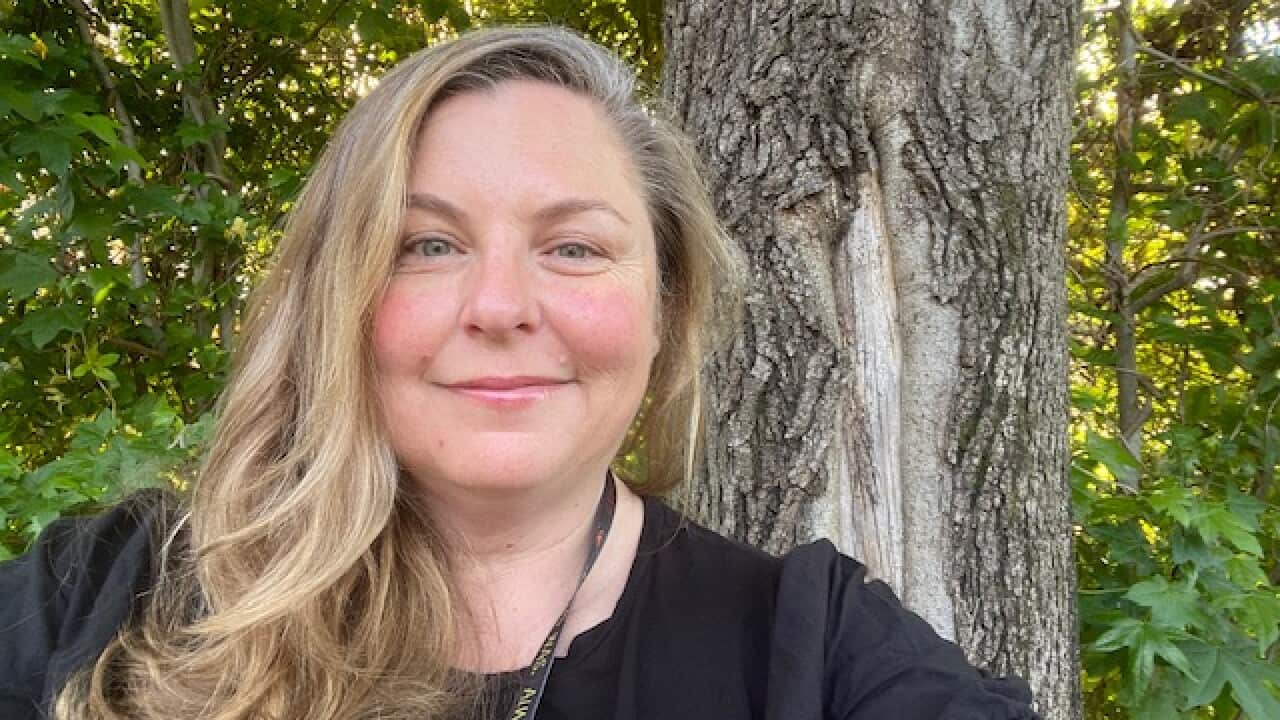As a child, Jasmine Seymour would listen, rapt and wide-eyed, to tales of her Dharug ancestors and their connection to country – the yams harvested from the rich alluvial plains of the Hawkesbury River, the destruction of a giant eel engraving at nearby Cattai.
Named the Hawkesbury in 1789 by the infant colony’s first Governor of NSW, Arthur Phillip, the great river of her childhood had always been known as Dyarubbin by the First Nations peoples of the area – the Dharug people to the north and west and Darkinjung peoples on the opposite side of the river, custodians of the region for around 50,000 years.
A descendant of Dharug warrior Yarramundi and his daughter Maria Lock, Seymour grew up in nearby Maraylya, bounded in the north and the east by Cattai Creek.
To her ancestors, the great river winding its way through a vast arc of sandstone country was a rich source of sacred ritual, storytelling, spiritual nourishment and sustenance.
“Where Yarramundi met Governor Phillip on the banks of the Hawkesbury River, my family still pretty much live right there, and have never left.
“When I was little, my grandmother taught us to farm and eat yams, that was passed down to her from her relatives. She had a lot of bush food knowledge, a real understanding of place. We also got a big sense of belonging from my uncle, so that comes across to me in my connection to who I am and my own connection to place.”
The Hawkesbury, for Seymour, also holds dark and painful history.
As explored in the upcoming SBS documentary series , the bloody wars fought between the colonial settlers and local tribes raged from the time the ; women and children were among the most vulnerable victims of the violent conflict.
Between 1794 and 1816, Dyarubbin was the site of one of the longest and most brutal .
This dark history has stained the geography of the river up and down its length. One particularly painful area for Seymour is , where some of her ancestors were rounded up and placed in a tiny, cramped dog’s leg of land reserved for dispossessed tribes in 1889 at Cumberland Reach. Today there stands a monument memorialising the Aboriginal people of the Hawkesbury, but as Seymour says in the documentary, “it’s been used against us to say that we’re not here anymore.”
Aboriginal people living on the reserve were expected to pay board to live on their own land, she says. Many worked on a nearby pastoral property in exchange for wages and rations.
“They had to hunt and find food and pay the colony back for their food. It is a really sad place – especially when you consider how big the Hawkesbury is, to be given a tiny patch of land that is really bordered by a huge cliff, and that is very wet, and very dark… to me, it’s like a prison, almost.
“And right across the river, you see all this beautiful farmland, where you imagine yams would be growing and it’s the hunting places of the Dharug people. And to be completely taken over by colonial farming, it’s such an insult.”
Seymour’s story is one of many in The Australian Wars, which gives voice to the history and legacy of First Nations peoples during Australia’s brutal frontier wars – and interrogates a critical question: who writes Australian history and how does it shape Australian identity?
As filmmaker and narrator Rachel Perkins says in the show, Australian history is full of silences. Names have immense power, encoding culture, history, geography and spiritual ties. Erasing Indigenous names from the landscape is part of this great silencing, drowning out their past in what historian calls
“On the Hawkesbury, you really see the silencing of Aboriginal people,” says Seymour, a Western Sydney schoolteacher and author.
“Around the 1930s, an enormous eel engraving was deliberately destroyed at Cattai National Park. My family were living out there at the time and my uncle talks about it. We have this rich Aboriginal history and heritage but they really wanted this to disappear.”
Seymour witnessed first-hand the power of reclaiming names as a part of a landmark collaborative research project, , led by Professor Grace Karskens.
Using a list of 178 Indigenous river place names collated by Reverend John McGarvie in 1829, the team of Dharug locals, historians, archaeologists and linguists identified the original locations along the river.
It was a soul-stirring experience, says Seymour: giving the river back its Indigenous names allowed for the recovery, recognition and revitalisation of the river’s Aboriginal history, culture and language. Some names include Colomatta Gulu-mada (Blue Mountains), Bulyayorang (Windsor), Marrengorra (Richmond) and Curry Jong (Kurrajong).
“I think it’s really important to reclaim history, especially in the Sydney area, because what they say about the Dharug is that we were the first colonised but the last recognised.
“Through the Dyarubbin project, we found the Indigenous names of the Blue Mountains and Windsor, their true names. If you think of globalisation and the sense of place that the world has today, and the people who fill those places, [reclaiming names] reminds us that Sydney has always been an Aboriginal place… this is our identity, this is where we come from.”
The Real Secret River project is part of a larger nationwide movement to reclaim Indigenous place names.
In 2021, Gomeroi woman Rachael McPhail to include traditional place names in all addresses.
Across the country, renaming projects include that , which will be renamed because of Boyd’s association with ‘blackbirding’, the coercion of people through deception or kidnapping to work as slaves or poorly paid labourers.
For communities that had language stripped from them through colonisation, it is a way back to country and identity, Seymour says.
These renaming projects are truth-telling projects, about “reclaiming history, saying, ‘This is who we are, this is what happened to us’,” she says.
This is particularly critical in the Hawkesbury, where the past casts a long shadow.
Despite Western Sydney being home to one of , too few know of their Indigenous history.
“In the past if you had spoken about being Aboriginal, your children get taken, you lose your job…So there’s a really deep silence around the area’s Indigenous history because people were so persecuted.”
Seymour’s work on the project has inspired her to do a master’s in Indigenous language education as part of a broader mission to get Dharug language into schools. “It is such a good thing for community and well-being and a sense of belonging. It says, here we are – we’ve never gone away.”
Three-part documentary series The Australian Wars premieres on Wednesday 21 September at 7.30pm on SBS and NITV, airing weekly. You can catch up .
Join the conversation #TheAustralianWars

